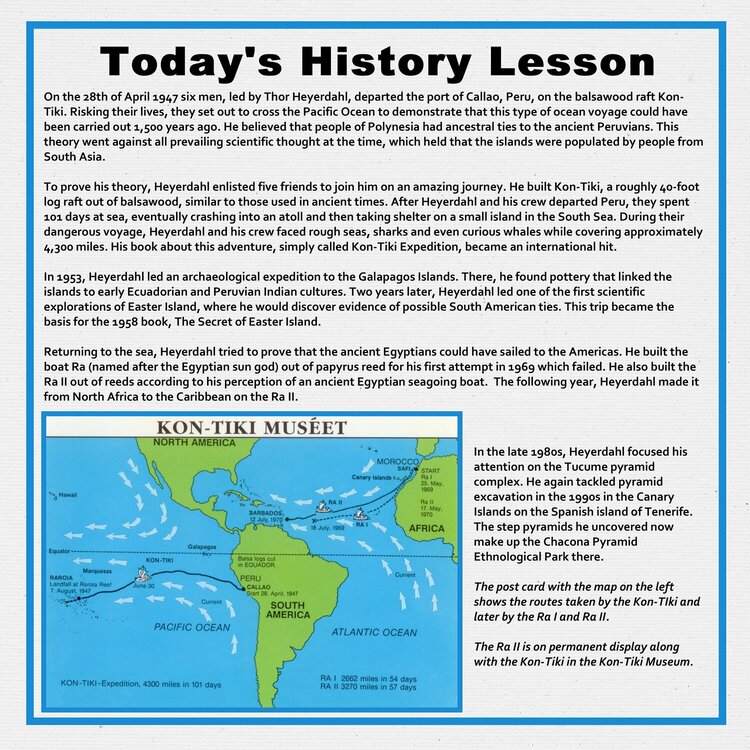EXTRA 11% OFF Orders $100+ With Code: THANKYOU


 Give a Cheer
Give a Cheer
On the 28th of April 1947 six men, led by Thor Heyerdahl, departed the port of Callao, Peru, on the balsawood raft Kon-Tiki. Risking their lives, they set out to cross the Pacific Ocean to demonstrate that this type of ocean voyage could have been carried out 1,500 years ago. He believed that people of Polynesia had ancestral ties to the ancient Peruvians. This theory went against all prevailing scientific thought at the time, which held that the islands were populated by people from South Asia.
To prove his theory, Heyerdahl enlisted five friends to join him on an amazing journey. He built Kon-Tiki, a roughly 40-foot log raft out of balsawood, similar to those used in ancient times. After Heyerdahl and his crew departed Peru, they spent 101 days at sea, eventually crashing into an atoll and then taking shelter on a small island in the South Sea. During their dangerous voyage, Heyerdahl and his crew faced rough seas, sharks and even curious whales while covering approximately 4,300 miles. His book about this adventure, simply called Kon-Tiki Expedition, became an international hit.
In 1953, Heyerdahl led an archaeological expedition to the Galapagos Islands. There, he found pottery that linked the islands to early Ecuadorian and Peruvian Indian cultures. Two years later, Heyerdahl led one of the first scientific explorations of Easter Island, where he would discover evidence of possible South American ties. This trip became the basis for the 1958 book, The Secret of Easter Island.
Returning to the sea, Heyerdahl tried to prove that the ancient Egyptians could have sailed to the Americas. He built the boat Ra (named after the Egyptian sun god) out of papyrus reed for his first attempt in 1969 which failed. He also built the Ra II out of reeds according to his perception of an ancient Egyptian seagoing boat. The following year, Heyerdahl made it from North Africa to the Caribbean on the Ra II.
In the late 1980s, Heyerdahl focused his attention on the Tucume pyramid complex. He again tackled pyramid excavation in the 1990s in the Canary Islands on the Spanish island of Tenerife. The step pyramids he uncovered now make up the Chacona Pyramid Ethnological Park there.
The post card with the map on the left shows the routes taken by the Kon-TIki and later by the Ra I and Ra II.
The Ra II is on permanent display along with the Kon-Tiki in the Kon-Tiki Museum.
No products have been added to this project.
Thanks for spreading positivity!
September 04, 2016
August 21, 2016
August 19, 2016
August 18, 2016
August 18, 2016
August 18, 2016
August 18, 2016
August 17, 2016
August 17, 2016